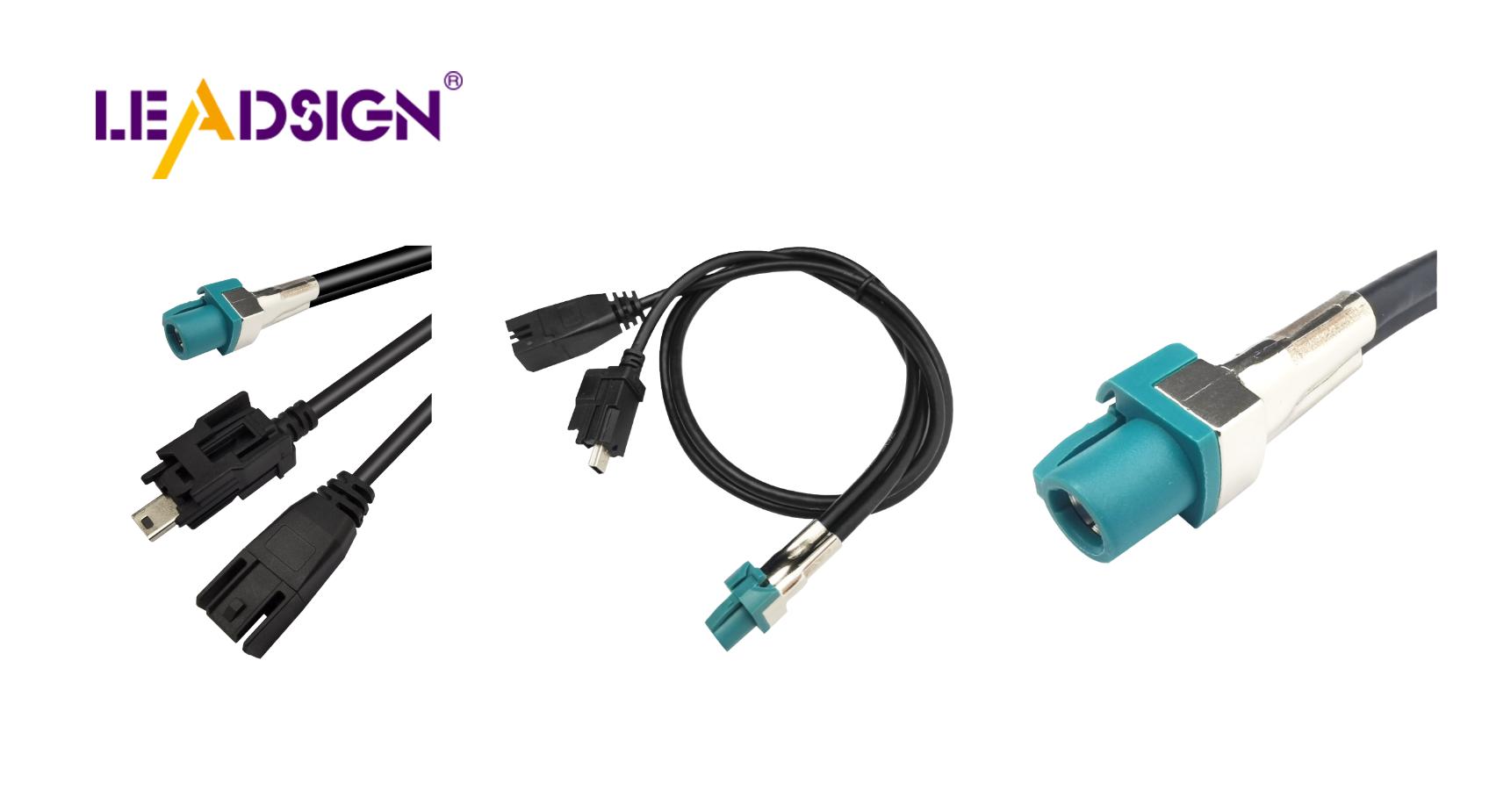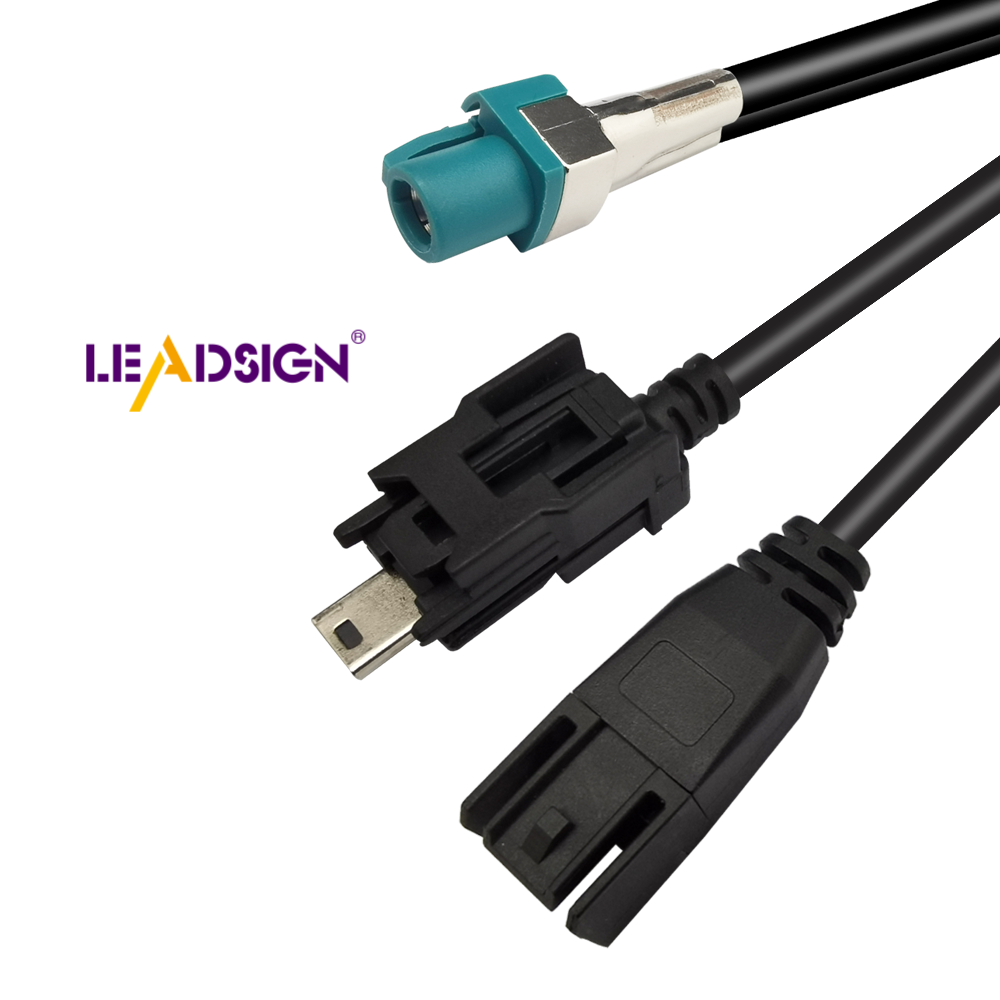Exploring Automotive Wiring Connector Types for Modern Vehicles

Automotive electrical connectors types are crucial in modern vehicles, facilitating communication between various electronic components. As cars become increasingly high-tech, the demand for advanced electrical connectors grows. The global market for automotive wiring is rapidly expanding, projected to increase from USD 51.48 billion in 2023 to over USD 88.36 billion by 2033. This growth reflects the increasing complexity and sophistication of car wiring systems, which have evolved significantly over the years to accommodate new technologies and enhance vehicle performance.
Overview of Automotive Wiring Connectors
Definition and Purpose
What are Wiring Connectors?
Wiring connectors are key parts in car electrical systems. They link wires and cables, helping electronic parts talk to each other. These connectors have different shapes and sizes for specific jobs in a car. By making strong connections, they keep the car's electrical system working well.
Importance in Vehicle Systems
Wiring connectors are very important in today's cars. They send signals and power, allowing many electronic features to work. From engine controls to music systems, connectors make sure everything works together smoothly. Without them, the car's wire network could fail or not work right.
Historical Development
Early Connector Types
Long ago, car wiring connectors were simple. Cars used basic ones for lights and ignition systems. These old connectors often broke easily and needed fixing a lot.
Evolution to Modern Connectors
Car wiring connectors have changed a lot over time. As cars got fancier, better connectors were needed. New tech like GPS and electric windows required complex ones. Today’s connectors are tough, reliable, and easy to install. They use new materials to handle bad weather and last long.
This change shows how the car industry wants better performance and reliability by improving connector technology for today’s smart consumers.
Types of Automotive Wiring Connectors

Modern cars use different automotive electrical connectors to help parts talk. Each type has a job, helping the car work well.
Blade Connectors
Features and Applications
Blade connectors are very common in cars. They have a flat metal piece that fits into a slot. This makes them easy to connect and disconnect. They are made from strong metals like brass or copper. These materials help them last long and not rust.
Common Uses in Vehicles
In cars, blade connectors are used in fuse boxes and lights. They are simple and reliable for connecting wires to switches or relays. They keep the car's electric system working well.
Pin Connectors
Features and Applications
Pin connectors give good connections in many places, like cars. They have a pin and socket that fit together tightly. These connectors work well and don't cost much. They come in different sizes for various uses.
Common Uses in Vehicles
Pin connectors are found in engine controls and sensors. Their design makes them easy to put on or take off when needed. They help the car's electronic systems run smoothly.
Specialty Connectors
Features and Applications
Specialty connectors are made for special jobs needing unique features. Some have locks for shaky places like planes or trains. They stay connected but can be undone easily if needed.
Common Uses in Vehicles
In cars, specialty connectors are used in high-power systems or electric vehicles. They keep power flowing safely, protecting parts from bad weather using strong materials like nylon.
Main Traits of Today's Connectors
Today's car connectors are made for modern cars. They are strong, reliable, and easy to put in. This helps complex systems work well.
Strong and Reliable
What They're Made Of
The stuff used to make connectors is important. Makers use copper, brass, or bronze because they carry electricity well and don't rust. These materials keep the connection strong over time. Scientific Research Findings show that different materials can make fast connectors work better for many uses.
Handling Tough Conditions
Connectors need to handle tough weather like heat, wetness, and dust. Makers use metal that doesn't rust or plastic that handles heat well. These protect the connectors from damage so they last long. In high places, special connectors stop water from getting in and keep connections safe.
Easy to Install
New Designs
New designs make connectors simple to install. Smaller wires mean less weight and easier setup, helping cars run better. Tiny connectors let car makers fit more features in small spaces without losing quality.
Works with Car Systems
Modern connectors fit with many car systems. They have different pin setups for power and signals. This makes them flexible for new uses, ready for future tech changes in cars. Keeping them up-to-date helps avoid breakdowns and saves money on repairs.
How to Install and Best Ways to Do It
Putting in automotive electrical connectors right makes the car's electric system work well. This part tells you what tools you need, how to staying safe, and steps to put them in.
Getting Ready and Tools
Tools You Need
To put in automotive electrical connectors, you need special tools. These make sure the connection is strong:
Crimping Tool: Squashes connectors onto wires tightly.
Soldering Iron: Melts stuff to stick wires and connectors together.
Wire Strippers: Takes off wire cover so metal shows.
Heat Shrink Tubing: Wraps around connections to keep them dry when heated.
These tools help make connections that last long in new cars.
Staying Safe
Being safe is super important with car electric systems. Follow these tips for a safe job:
Unhook the car battery before starting to stop shocks or sparks.
Wear gloves and safety glasses to avoid getting hurt.
Work where air moves well so you don't breathe bad stuff from melting things.
Check all connections are tight before hooking the battery back up.
Doing these keeps you safe and makes sure everything works right.
Steps to Put Connectors In
Picking Connectors
Choosing the right connector is key for good connections. Think about these when picking one:
Type of Connection: Decide if you need a blade, pin, or special connector for the job.
Material Match: Make sure connector material fits wire type so it doesn't rust or work badly.
Weather Conditions: Pick connectors that can handle heat or wet places they will be used.
Picking well helps the electric system last longer and work better.
Making Good Connections
Do these steps for strong connections:
Get Wires Ready: Strip off wire cover with strippers so enough metal shows.
Put on Connector: Use crimping tool to fix connector on wire tight.
Add Solder for Strength: Use soldering iron to melt solder on connection for extra hold.
Use Heat Shrink Tubing: Slide tubing over connection, heat it so it wraps tight, keeping water out.
By doing this, installers can make sure car electric systems have strong, lasting connections.
Picking the right car connectors is very important. They connect different parts of the car's electric system. This helps power and signals move smoothly. Good connectors keep cars safe and working well. Newer connectors are stronger and easier to put in. As tech gets better, these connectors will be even more important for modern cars' complex systems.
See Also
The Significance of Fakra Car Connectors in Contemporary Automobiles
Fundamentals of HSD Connectors in Automotive Sector
Discovering the Advantages of Fakra Car Connectors
Enhancing Auto Data Transfer: Sophisticated Connectors and Cables
Transforming Auto Connectivity: The Benefits of HFM Connectors

